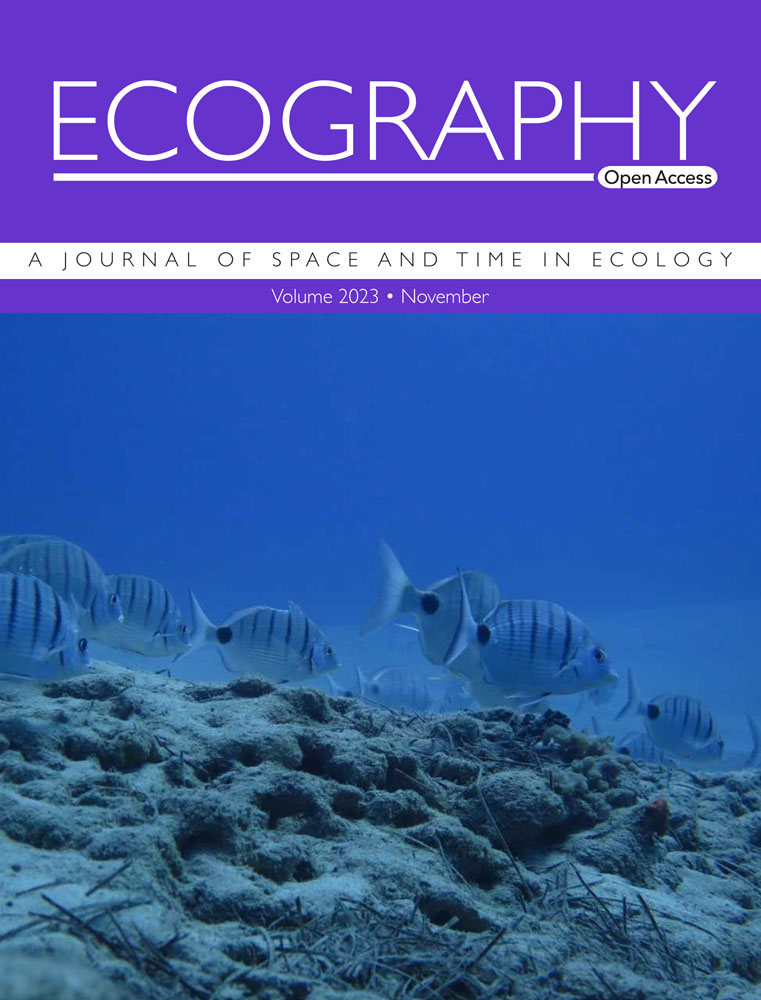The pace and drivers of community change vary over space and time – findings from a national biomonitoring programme
IF 5.4
1区 环境科学与生态学
Q1 BIODIVERSITY CONSERVATION
引用次数: 0
Abstract
Habitat heterogeneity and demographic processes create variability in the major taxonomic diversity trends: 1) biotic homogenization and 2) the emergence of novel community compositions. Nonetheless, little is known about how the imprints of environmental filtering and random demographic processes on community dissimilarity vary over 1) time or 2) space. Quantifying such variation is key to revealing temporal regime shifts, latitudinal trends, and site‐level specificity in the drivers of community dissimilarity.To characterise variation in drivers of community change, we introduce the concept of ‘non‐stationary community responses'. We then apply this concept to estimate temporal and spatial variability in the imprints of climate, land cover and random processes on spatial and temporal dissimilarity of community composition. As a model system, we use multidecadal monitoring data of bird (1147 monitoring sites; 49 years), butterfly (101 monitoring sites; 22 years), and moth (99 monitoring sites; 26 years) communities across a 1200‐km latitudinal gradient in Finland.Regarding spatial dissimilarity, environmental filtering had a larger imprint than what random processes had. For butterflies and moths, environmental filtering shifted from being primarily associated with land cover to being primarily associated with climate indicating a likely regime shift along with warming climate. Regarding temporal dissimilarity of bird and butterfly communities, the imprints of environmental filtering and random processes varied between monitoring sites. A conventional stationary model was unable to track such site‐specific processes. The imprints did not change linearly along a latitudinal gradient.Our results demonstrate that accounting for non‐stationarity in community dynamics is needed to pinpoint temporal shifts and spatial variability in the drivers of community change. Should we assume that community change is driven by the same primary forces at all times and everywhere, then we will fail to detect the real local and contemporary drivers of change, and risk applying the wrong corrective measures.社区变化的速度和驱动因素随时间和空间的变化而变化——这是一项国家生物监测计划的发现
生境异质性和人口统计学过程导致了主要分类多样性趋势的变化:1)生物同质化和2)新群落组成的出现。然而,对于环境过滤和随机人口统计过程对社区差异的影响是如何随时间或空间变化的,我们知之甚少。量化这种变化是揭示群落差异驱动因素的时间变化、纬度趋势和地点水平特异性的关键。为了描述群落变化驱动因素的变化特征,我们引入了“非平稳群落响应”的概念。然后,我们将这一概念应用于估算气候、土地覆盖和随机过程对群落组成时空差异的影响。作为模型系统,我们使用了鸟类的多年监测数据(1147个监测点;49年),蝴蝶(101个监测点;22年),蛾类(99个监测点;26年)的社区横跨1200公里的纬度梯度在芬兰。在空间差异方面,环境过滤比随机过程具有更大的印记。对于蝴蝶和飞蛾来说,环境过滤从主要与土地覆盖有关转变为主要与气候有关,这表明随着气候变暖,一种可能的政权转变。对于鸟类和蝴蝶群落的时间差异,环境过滤和随机过程的印记在不同的监测点之间存在差异。传统的固定模型无法跟踪这种特定地点的过程。印迹不沿纬度梯度呈线性变化。我们的研究结果表明,需要考虑群落动态的非平稳性,以确定群落变化驱动因素的时间变化和空间变异性。如果我们假设社区变化在任何时候和任何地方都是由同样的主要力量驱动的,那么我们将无法发现真正的本地和当代的变化驱动因素,并有可能采取错误的纠正措施。
本文章由计算机程序翻译,如有差异,请以英文原文为准。
求助全文
约1分钟内获得全文
求助全文
来源期刊

Ecography
环境科学-生态学
CiteScore
11.60
自引率
3.40%
发文量
122
审稿时长
8-16 weeks
期刊介绍:
ECOGRAPHY publishes exciting, novel, and important articles that significantly advance understanding of ecological or biodiversity patterns in space or time. Papers focusing on conservation or restoration are welcomed, provided they are anchored in ecological theory and convey a general message that goes beyond a single case study. We encourage papers that seek advancing the field through the development and testing of theory or methodology, or by proposing new tools for analysis or interpretation of ecological phenomena. Manuscripts are expected to address general principles in ecology, though they may do so using a specific model system if they adequately frame the problem relative to a generalized ecological question or problem.
Purely descriptive papers are considered only if breaking new ground and/or describing patterns seldom explored. Studies focused on a single species or single location are generally discouraged unless they make a significant contribution to advancing general theory or understanding of biodiversity patterns and processes. Manuscripts merely confirming or marginally extending results of previous work are unlikely to be considered in Ecography.
Papers are judged by virtue of their originality, appeal to general interest, and their contribution to new developments in studies of spatial and temporal ecological patterns. There are no biases with regard to taxon, biome, or biogeographical area.
 求助内容:
求助内容: 应助结果提醒方式:
应助结果提醒方式:


